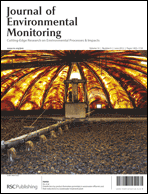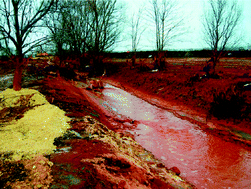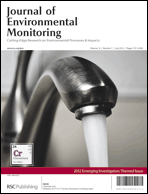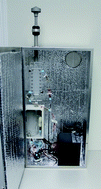Ever wondered what makes a successful submission? A little preparation and some simple changes may make all the difference. Harp Minhas, Editor of the Journal of Environmental Monitoring, shares his top ten tips for getting published:
1. Ensure your work has novelty and advances existing knowledge
- This is the main criterion for publication in most journals
2. Provide a clear statement of novelty/impact
- A lack of clarity about the relevance of your work could mean rejection
3. Provide a cover letter
- The cover letter should include a summary of the work, a novelty statement (with possible implications or applications) and a statement of article type, e.g., review, paper, communication, etc.
4. Read and follow the Guidelines for Authors
- Ensure your work is appropriate for the journal of your choice, sometimes the Guidelines for Authors are out of date so look at the journal content – does it match your paper?
5. Perform a thorough literature search
- References can tell Editors & Reviewers a lot about your knowledge of the field, make sure you have included all the relevant references to previously published works
6. Keep the language simple; short sentences
- No matter what your native language is, short simple sentences help to maintain clarity and simplicity in explanation
7. Proof read before submission
- Many small and minor errors are frustrating for reviewers as they read and assess your work, get a friend or colleague to read before submission
8. Write a clear, logical and concise story
- The relevant sections of the paper should follow in a clear and logical manner, stick to the facts and do not over-claim the novelty/advances
9. On revision, address all the reviewer comments
- Make sure you address ALL the reviewer comments, both in your responses and within the revised manuscript. It is OK to disagree with reviewers as long as you justify and explain why in your responses
10. If rejected, learn from the experience
- Try to learn from negative publishing experiences, and try to improve for your next submission accordingly
The above list is not intended to give you all the information you will require to write papers, but may help set you upon the right path and could be helpful as a check list when preparing your work for submission to a journal. Many other factors are also important, for example, reading the Ethical Guidelines is essential if you are presenting experiments that involve animals; as is the declaration of in-press papers, if these are not declared up front, they will inevitably lead to delays in the publication of your work.
 Fabrizio Monaci and co-workers at the University of Siena, Italy, and the University of Concepción, Chile, have measured the baseline element composition of two lichens (Nephroma antarcticum and Usnea sp.) growing in a remote region of SW Chilean Patagonia.
Fabrizio Monaci and co-workers at the University of Siena, Italy, and the University of Concepción, Chile, have measured the baseline element composition of two lichens (Nephroma antarcticum and Usnea sp.) growing in a remote region of SW Chilean Patagonia.


















